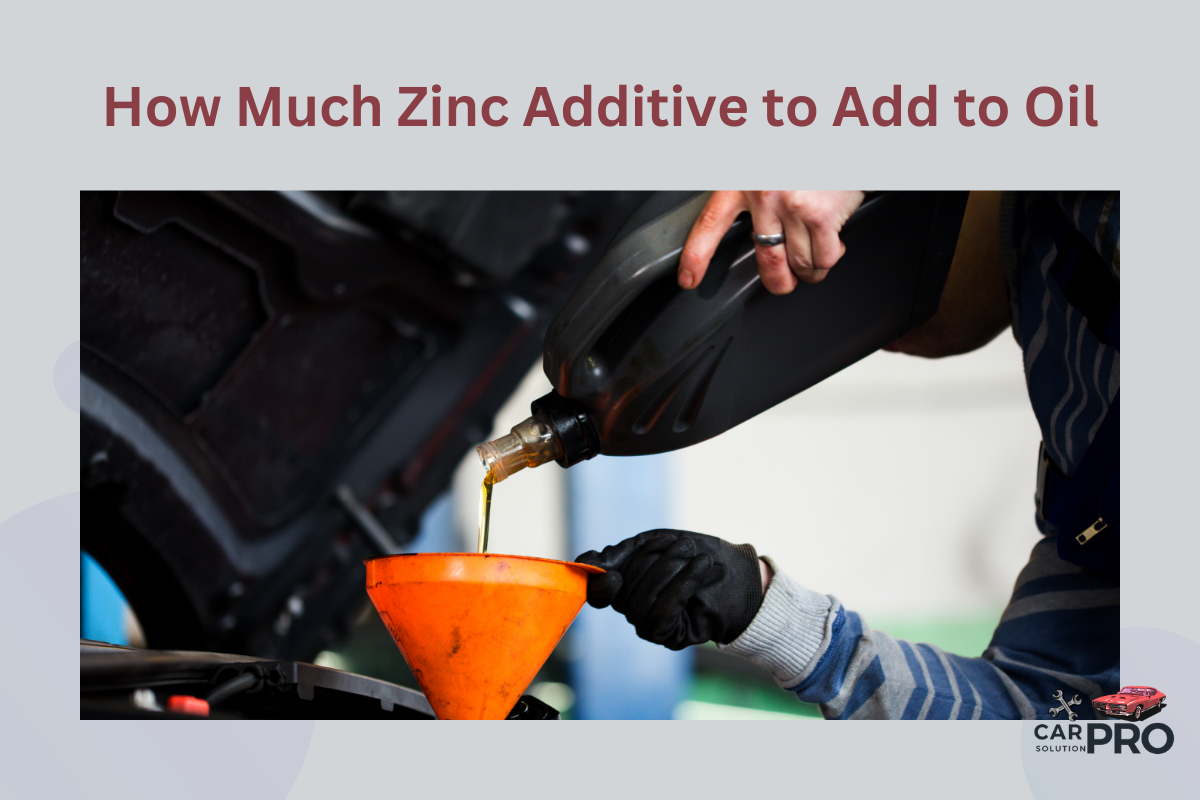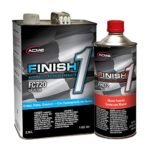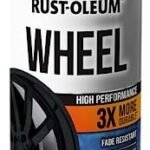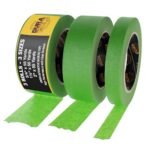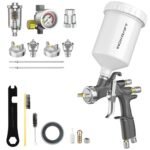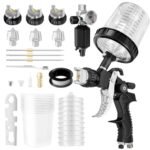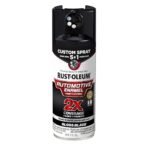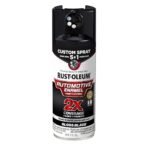Adding zinc to engine oil can boost protection for older engines and high-performance vehicles. Many car enthusiasts wonder about the right amount to use. The general recommendation is to add enough zinc additive to reach 1200-1500 parts per million (ppm) of zinc dialkyldithiophosphate (ZDDP) in your oil.
The exact amount depends on your starting oil and engine needs. For break-in periods, aim for the higher end of that range. After break-in, you can drop to around 1200 ppm. It’s important not to overdo it, as too much zinc can harm catalytic converters and other engine parts.
Always check your oil’s current zinc levels before adding more. Some oils, especially those for older or high-performance engines, may already have enough zinc. When in doubt, consult your vehicle’s manual or a trusted mechanic.
Key Takeaways
- Zinc additives protect engine parts in older and high-performance vehicles
- The ideal zinc concentration in oil ranges from 1200-1500 ppm ZDDP
- Careful measurement and regular oil testing help maintain optimal zinc levels
Zinc Additives in Engine Oils
Zinc additives play a crucial role in engine oils. They help protect metal surfaces inside the engine from wear and tear. These additives are especially important for older engines and high-performance applications.
The main zinc additive used in motor oils is called ZDDP (Zinc Dialkylphosphate). It forms a protective film on metal parts when they come into contact under high pressure and heat.
For newer vehicles, many modern oils already contain enough zinc. However, older vehicles may need extra zinc added to their oil. This helps prevent excessive wear on engine components.
When adding zinc to oil, it’s important not to overdo it. Too much zinc can cause other issues. A general rule is to aim for about 1200-1500 ppm (parts per million) of zinc in the oil.
Some popular zinc additives include:
- Lucas Engine Break-In Oil Additive
- COMP Cams Engine Break-In Oil Additive
- Rislone Engine Oil Supplement with Zinc Treatment
It’s best to follow the manufacturer’s recommendations when using these products. Always check your vehicle’s manual before adding any supplements to your engine oil.
Determining the Optimal Zinc Additive Concentration
The right amount of zinc additive for engine oil depends on a few key factors. These include the type of engine, its age, and the oil already in use.
For older engines or those with flat-tappet cams, more zinc is often needed. These engines may need 1400-1500 ppm of ZDDP during the break-in period. After that, about 1200 ppm is usually enough.
Newer engines typically need less zinc. Modern oils often have enough zinc already. Adding too much can cause problems.
To figure out how much to add, check your current oil’s zinc level. Then decide how much more you want. A common goal is around 1500 ppm total.
Here’s a simple way to calculate:
- Find out how much oil your engine holds
- Check the zinc level in your current oil
- Decide on your target zinc level
- Use this formula: (Target ppm – Current ppm) x Oil volume = Amount of additive needed
For a 5-quart system aiming for 1500 ppm, 1-2 ounces of zinc additive is often enough. This assumes the additive provides about 12,000 ppm of zinc.
Always follow the product instructions. Too little won’t help, but too much can harm your engine. When in doubt, ask a mechanic or the additive maker for advice.
The Process of Adding Zinc to Engine Oil
Adding zinc to engine oil is a straightforward process. First, choose a high-quality zinc additive designed for motor oil. These often contain ZDDP (Zinc Dialkylphosphate) or ZDTP (Zinc dialkyldithiophosphate).
Next, determine the correct amount to add. This typically depends on your engine’s needs and the additive’s concentration. Many products recommend adding 2 ounces per 5 quarts of oil.
Warm up the engine for a few minutes to circulate the existing oil. Then, turn off the engine and locate the oil fill cap.
Pour the measured amount of zinc additive directly into the engine oil. Be careful not to spill any on hot engine parts.
Replace the oil fill cap securely. Start the engine and let it run for a few minutes to mix the additive thoroughly with the oil.
It’s important not to use too much zinc, as excessive amounts can damage catalytic converters in modern vehicles. Always follow the manufacturer’s recommendations for your specific engine and additive product.
Safety and Environmental Considerations
Adding zinc additives to engine oil requires careful attention to safety and environmental factors. Excessive zinc can harm catalytic converters in modern vehicles. This may lead to increased emissions and potential legal issues.
Older engines often need more zinc for proper protection. But newer cars are designed to run with lower zinc levels. It’s crucial to follow manufacturer recommendations for your specific vehicle.
Proper handling of zinc additives is important. Wear gloves and avoid skin contact. If spilled, clean up immediately to prevent environmental contamination.
Dispose of used oil with zinc additives properly. Take it to a certified recycling center. Never pour it down drains or on the ground, as this can harm ecosystems.
When using zinc additives, consider:
- Vehicle age and type
- Local emissions regulations
- Proper storage and handling
- Safe disposal methods
By following these guidelines, you can use zinc additives effectively while minimizing risks to your vehicle and the environment.
Monitoring and Adjusting Zinc Levels Post-Addition
After adding zinc to engine oil, it’s important to track its levels. This helps ensure the right amount for engine protection.
Regular oil analysis is key. It shows the current zinc concentration in the oil. Most labs can measure zinc levels accurately.
Ideal zinc levels vary by engine type. Flat tappet cam engines need more zinc than roller cam engines. Check your engine’s specs for the right amount.
If zinc levels are too low, add more zinc additive. Follow the product instructions carefully. Don’t add too much, as excess zinc can harm catalytic converters.
If zinc levels are too high, you may need to change the oil. High zinc can cause problems in some engines.
Keep a log of oil changes and zinc additions. This helps track trends over time. It can show if your engine is using zinc faster than normal.
Consider these factors when adjusting zinc levels:
- Engine age
- Driving conditions
- Oil change interval
- Type of oil used
Remember, zinc is just one part of oil health. Check other additives and oil properties too. A balanced oil keeps engines running smoothly.
Frequently Asked Questions
Zinc additives play a key role in engine protection. Their proper use depends on factors like oil type, engine design, and driving conditions.
What is the recommended amount of zinc additive per gallon of oil?
The typical range is 1400-1500 parts per million (ppm) of zinc during engine break-in. After break-in, 1200 ppm is often sufficient.
For a standard 4-5 quart oil capacity, this translates to about 1-2 ounces of zinc additive per oil change.
Can zinc additives be used with synthetic oil, and if so, how should they be added?
Yes, zinc additives can be used with synthetic oil. They should be mixed thoroughly with the oil before adding to the engine.
For best results, add the zinc product when changing oil. Pour it into the oil filter before installation or directly into the crankcase before adding fresh oil.
Are there specific zinc additives that are best suited for engine oils?
ZDDP (Zinc dialkyldithiophosphate) is the most common and effective zinc additive for engine oils. It provides excellent anti-wear protection.
Some popular brands include Comp Cams ZDDP additive and Lucas Oil ZDDP Plus.
Is there a risk of using too much zinc in engine oil and what are the consequences?
Yes, using too much zinc can be harmful. Excess zinc can lead to increased oil consumption and potential catalytic converter damage.
It may also cause deposit formation on engine parts. Stick to recommended amounts to avoid these issues.
How does zinc in oil work to protect an engine, and is it effective?
Zinc forms a protective layer on metal surfaces, reducing friction and wear. It’s especially crucial for high-pressure contact points like cam lobes and lifters.
Zinc is highly effective at protecting these critical engine components, particularly in older engines or during break-in periods.
Where can I find reliable reviews and comparisons of ZDDP oil additives?
Automotive forums like Bob Is The Oil Guy often have detailed discussions and user experiences with ZDDP additives.
Specialty automotive websites and magazines also provide reviews and comparisons of various zinc additives for engine oil.
When you purchase a product through Amazon links on carsolutionpro.com, we may earn a small commission at no extra cost to you. This helps support the site and keep our content free. As an Amazon Associate, we earn from qualifying purchases made through our links.
